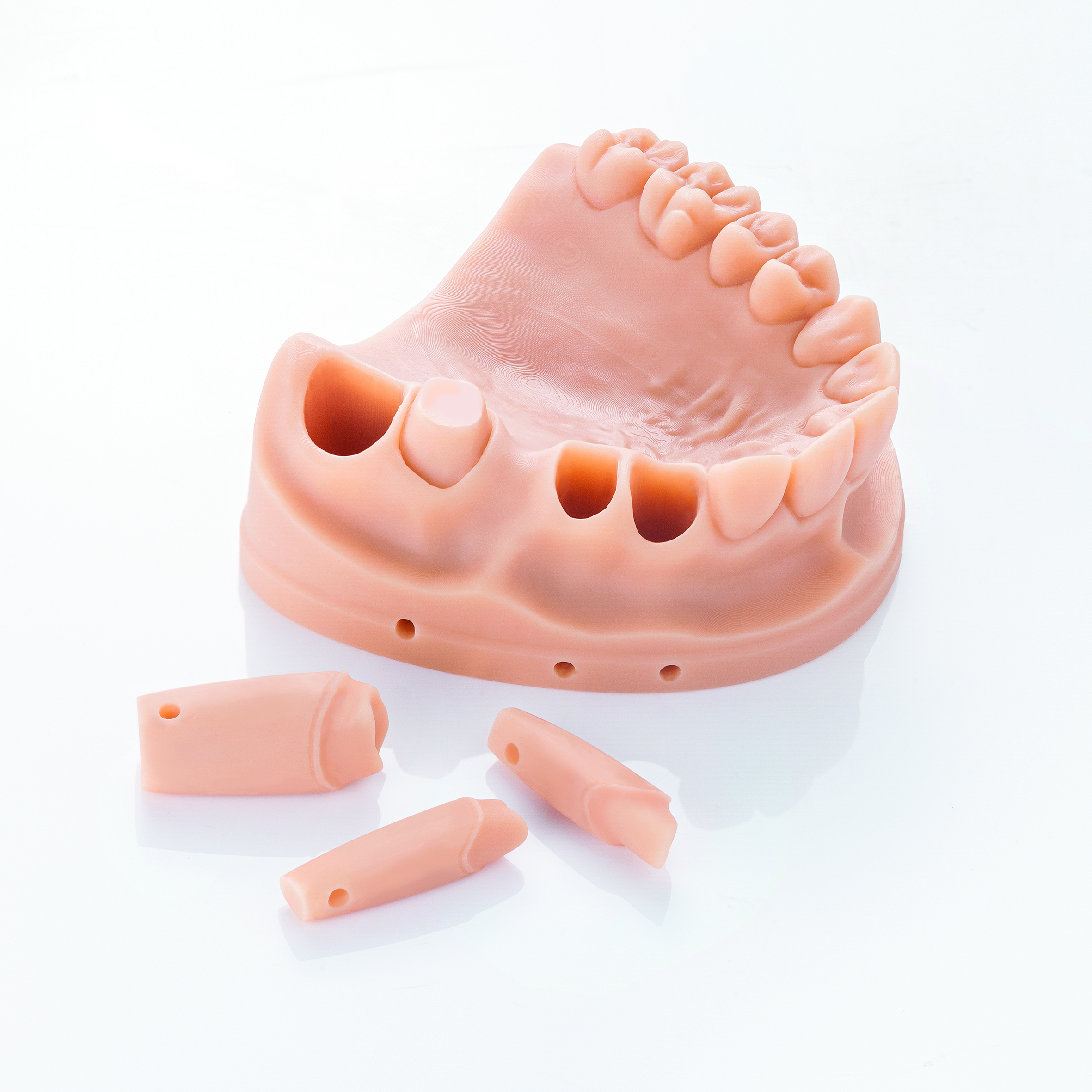How digital technologies are changing the manufacturing of dental models
The fact that new technologies in the dental industry are changing the everyday work of dental technicians is no longer a secret. We have also reported on this in previous posts. Today we would like to shed light on one of the everyday work steps in the laboratory from this point of view - the manufacturing of dental models. We first briefly describe the conventional and then the digital process and summarize the advantages and disadvantages of the digital process for you at the end of the article.
Process of conventional manufacturing of dental models
First, we take an impression of the patient's oral situation – it creates a negative form of this situation. By filling in the impression, we create the positive form of the oral situation - the situation model.
The impressions often arrive in the dental laboratory with residues of saliva and blood, which have to be removed before they are cast. After the impression has been cleaned, it is prepared by marking the model boundaries and – in the case of lower jaw impressions – the lingual opening is sealed with wax or silicone.
Then the plaster is mixed. It is important to ensure that there are no bubbles which would affect the surface quality of the model. Now the impression can be filled with plaster. To ensure that the plaster completely fills the impression and also flows into the deepest parts of the dental arch, this process takes place with the help of a vibration-tool.
Once the plaster has hardened, the impression and plaster model should be separated. The impression material loses elasticity over time, becomes brittle and is difficult to remove from the model due to the water release of the material.
To bring the model into its final form, it is then elaborated with a plaster trimmer.
Process of digital production of dental models
The oral situation is recorded digitally with the help of an intraoral scanner. The scan data is then transmitted to the dental laboratory. Here the data is processed by dental technicians in model builder software.
The data saved in STL format, for example, is now transmitted to the 3D printer and the model is created using the 3D printing process.
After completing the 3D printing process, the model is freed from additional support material, cleaned and finally cured. Only when the post-process is complete does the model have the purity and stability to be able to use it as a working basis for further steps, such as ceramic veneering.
Advantages and disadvantages of the digital process in the manufacturing of dental models
The length of the process description alone shows how much time the digital process saves in model production. But other challenges of the conventional process are also avoided.
For patients, taking an impression using an intraoral scanner is definitely more pleasant than taking an impression with the impression compound, which not only leads to an unpleasant feeling in the mouth for many patients, but also to a gagging reflex.
The scan data is transmitted virtually to the dental laboratory in real time. In the past, dental practices made sure to work with a laboratory in the vicinity so as not to lose travel time. This is no longer necessary thanks to the transfer of virtual data.
By working with virtual data, work preparation becomes clean work. At best, the scan data must be digitally freed from blood and saliva. The messy work with plaster is also eliminated.
Another advantage of the digital impression is that work can be continued directly on the digitally created model. The physical model is only necessary for fitting the designed crown and bridge framework manufactured in a CAD/CAM process.
Last but not least, the model can be reproduced at any time due to the stored data.
There is also a disadvantage in the digital production of models, which we do not want to hide from you: The digital model can only be as accurate as the scanned file. For example, the edge fit can only be checked to a limited extent. Restoration and model can still be matched to each other, though.
CONCLUSION
The digitization of dental processes is constantly progressing, which means that the technologies are also continuously improving. An investment in digital dental technology is therefore recommended - this saves resources in the long term and helps you to create more value in your laboratory.
